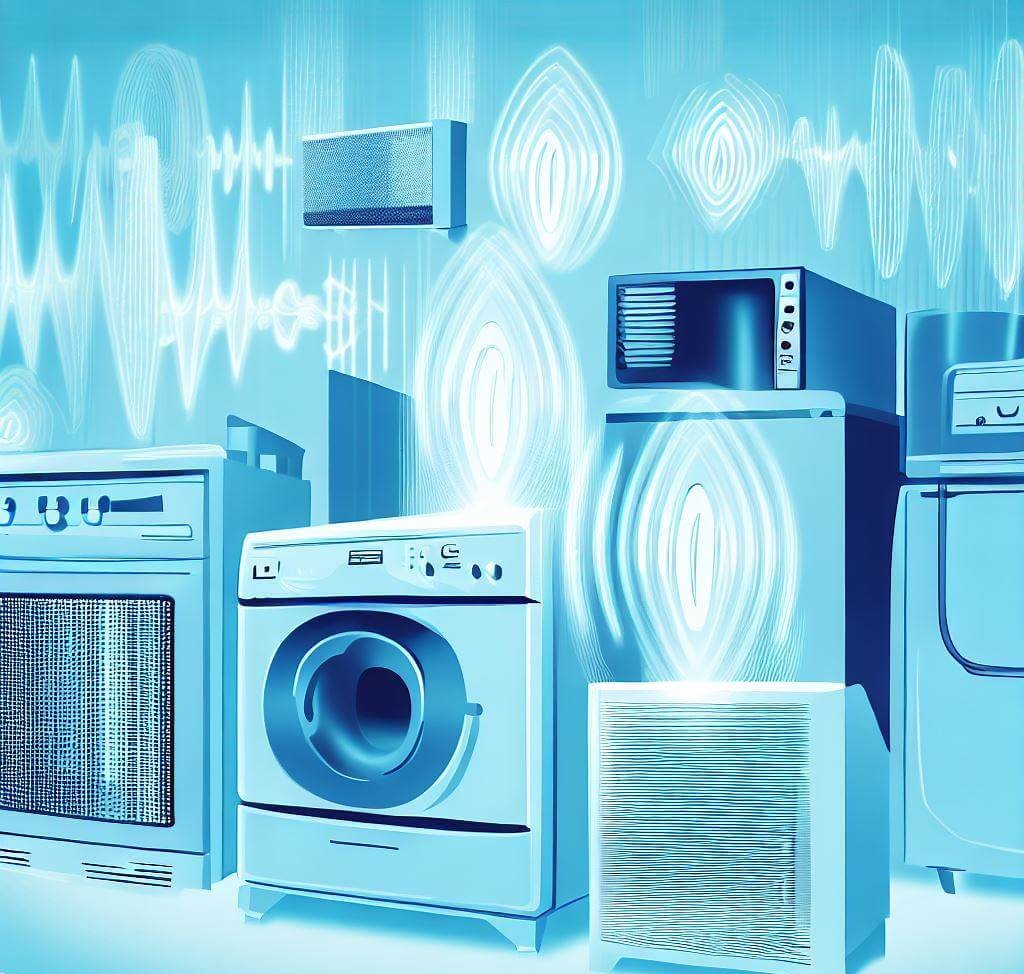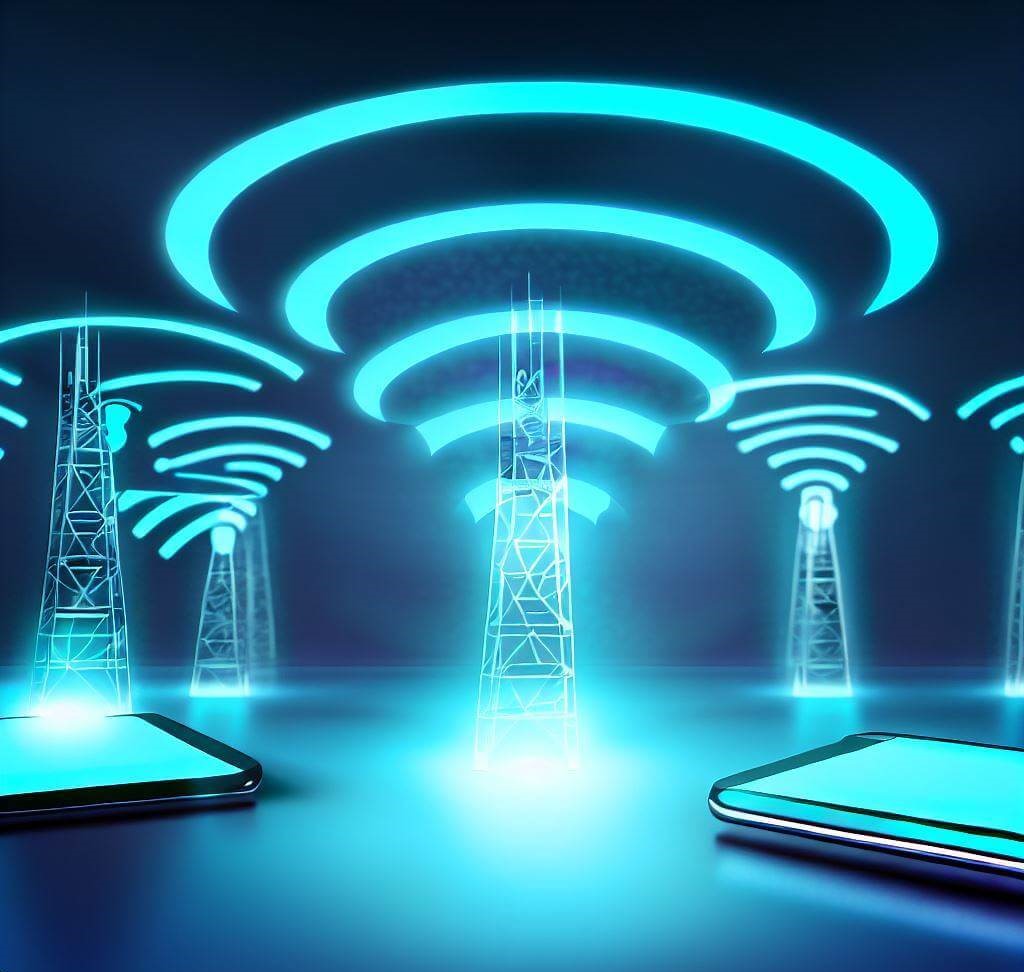Introduction
The Importance of Understanding EMF
In our digitally connected world, the presence of Electromagnetic Fields (EMF) is practically inescapable. From the device you’re reading this article on to the invisible waves that enable your Wi-Fi connection, EMF is a constant yet often unnoticed part of our daily lives. But just because it’s ubiquitous doesn’t mean it’s entirely benign. There are ongoing discussions and research about the impact of different types of EMF on human health, and various concerns have been raised. That’s why understanding what EMF is and its different types, and how it affects our lives has become more important than ever.
The purpose of this discussion isn’t to alarm you, but rather to arm you with knowledge. Consider this: you wouldn’t want to swim in a pool without knowing its depth, right? In the same way, understanding EMF empowers you to make informed choices, whether it’s the type of phone you use or how you set up your living space.
Aim of the Article
This comprehensive guide aims to unravel the intricacies of different types of EMF. We will delve into the definitions, examples, and categorizations of EMF, examine their respective pros and cons, and provide actionable suggestions for reducing exposure and enhancing EMF protection. Buckle up as we take this educational journey together!
What is EMF?
Definition
EMF stands for Electromagnetic Fields. At its core, EMF is a field of energy produced by electrically charged objects. The field is composed of both electric fields, which are generated by voltage differences, and magnetic fields, which are generated by the flow of electric current. These electric and magnetic fields oscillate in a perpendicular manner to each other and propagate through space at the speed of light. In simpler terms, think of it like ripples created when you throw a stone into a pond—only these ripples are invisible and move a lot faster.
Types of EMF
When it comes to categorizing EMF, there are several ways to go about it, but the most common distinction is based on frequency. The frequency is the number of oscillations that the EMF makes per second, and it’s measured in Hertz (Hz). Broadly speaking, EMFs are usually grouped into three main categories based on frequency:

Low-Frequency EMF
Description
Low-frequency electromagnetic fields (EMF) generally fall under the frequency range of up to 100 kHz. These types of fields are primarily generated by electrical devices and installations that are part of our everyday lives—think electrical outlets, household appliances like your vacuum cleaner or refrigerator, and even electrical installations like transformers and power lines.
Examples
- Electrical Power Lines: These are a significant source of low-frequency EMF and are often studied for their potential health impacts.
- Household Appliances: Devices like washing machines, refrigerators, and microwaves emit low-frequency EMFs.
Several organizations and studies have aimed to understand the health impacts of low-frequency EMFs. For example, the World Health Organization (WHO) states that the evidence for health effects from low-frequency EMFs is inconclusive – particularly in the context of long-term exposure. However, short-term exposure to low levels is generally considered to be safe.
Pros and Cons
Pros:
- Lower Energy: Lower frequencies mean lower energy, making them generally less capable of causing harm at a cellular level compared to high-frequency EMF.
Cons:
- Potential Health Concerns: Though evidence is not conclusive, some research suggests that prolonged exposure to low-frequency EMF could potentially cause health issues like fatigue, sleep disturbances, and headaches.

High-Frequency EMF
Description
High-frequency EMFs fall within the frequency range of above 100 kHz and include things like ultraviolet rays, gamma rays, and X-rays. These are higher-energy EMFs and are used in various applications, including medical imaging and cancer treatment.
Examples
- X-Rays: Used in medical diagnostics.
- Ultraviolet Rays: Emitted by the sun and also used in tanning beds.
High-frequency EMFs have been more conclusively linked to health risks. For example: excessive exposure to ultraviolet rays is a known cause of skin cancer. X-rays are ionizing radiation, which means they have enough energy to remove electrons from atoms, potentially leading to cellular damage and cancer.
Pros and Cons
Pros:
- Medical Applications: High-frequency EMFs like X-rays are invaluable for medical diagnostics and treatments.
Cons:
- Health Risks: These are ionizing radiations capable of causing cellular damage and are a proven carcinogen in the case of excessive exposure.

Radiofrequency EMF
Description
Radiofrequency EMF falls in the frequency range between 100 kHz and 300 GHz. This range is most commonly used for various forms of wireless communication, including radio, TV, and Wi-Fi signals.
Examples
- Mobile Phones: A common source of radiofrequency EMF.
- Wi-Fi Routers: These devices emit radiofrequency EMF to provide wireless internet.
Radiofrequency EMFs have been the subject of numerous studies to assess their potential impact on health. The International Agency for Research on Cancer (IARC), part of the WHO, has classified radiofrequency EMFs as “possibly carcinogenic to humans.” However – more research is needed to substantiate this claim.
Pros and Cons
Pros:
- Wireless Communication: Enables seamless, wireless transmission of data, making many aspects of modern life more convenient.
Cons:
- Potential Health Risks: While not definitively proven, some studies suggest a potential link between long-term exposure to radiofrequency EMFs and health issues like headaches and fatigue.
Exposure Sources
Understanding the sources of EMF exposure is the first step in making informed decisions about your interaction with these fields. Given that EMFs are emitted from a variety of devices and installations – it’s crucial to identify these sources based on the types of EMF.
Low-Frequency EMF Sources
- Electrical Power Lines: Overhead power lines and substations are one of the primary sources of low-frequency EMFs. If you live near these structures, the chances are that you’re exposed to higher levels of this type of EMF.
- Household Appliances: Almost all electrical appliances in your home emit some level of low-frequency EMFs. This includes refrigerators, microwaves, washing machines, and even hairdryers.
- Electric Cars: With the rise of electric vehicles, there has been growing concern about the low-frequency EMFs they might emit, especially when charging.
High-Frequency EMF Sources
- Medical Equipment: X-Ray machines and CT scanners are common high-frequency EMF sources in medical settings.
- UV Tanning Beds: Tanning salons often use beds that emit high-frequency ultraviolet rays.
- The Sun: One of the most natural and inescapable sources of high-frequency EMFs is the sun, which emits ultraviolet rays.
Radiofrequency EMF Sources
- Smartphones: Probably the most ubiquitous source of radiofrequency EMFs. The exposure increases when making calls or using data services.
- Wi-Fi Routers: These devices emit radiofrequency EMFs to provide you with wireless internet connectivity.
- Television and Radio Transmitters: These installations also emit radiofrequency EMFs, although usually at a distance from residential areas.
EMF Protection
Once you understand the sources of EMF the next logical step is to look into protection methods. It’s essential to approach this subject with a level-headed perspective, relying on research and proven methods.
How to ReduceLow-Frequency EMF Exposure
- Distance: The most straightforward method to reduce exposure is by keeping a safe distance from the sources. For example – avoid placing your bed near electrical outlets or appliances.
- Shielding: Specialized shielding materials can block or reduce low-frequency EMFs. These could be in the form of wall paint or even fabrics.
- Limit Usage: Limit the time spent using appliances that emit low-frequency EMFs, or opt for appliances with lower EMF emissions.
Reducing High-Frequency EMF Exposure
- Avoid Prolonged Sun Exposure: Wearing protective clothing and using sunscreen can reduce the impact of UV rays.
- Medical Precautions: When undergoing medical procedures involving high-frequency EMFs like X-rays – ensure that protective measures, such as lead shields, are used.
Reducing Radiofrequency EMF Exposure
- Wi-Fi Timers: Use timers to turn off Wi-Fi routers during times when they are not in use.
- Hands-free Devices: Use hands-free or speaker mode while making calls to keep your phone away from your body and reduce exposure.
- EMF-Reducing Phone Cases: There are specialized phone cases that claim to reduce EMF exposure, although their efficacy varies.
Regulatory Guidelines
Understanding the guidelines set forth by regulatory agencies can help you navigate the complex landscape of EMFs. These guidelines serve as benchmarks for safe exposure levels and often influence the design and operation of devices that emit EMFs.
International Bodies
World Health Organization (WHO)
The World Health Organization provides guidelines and research on the impact of EMFs on human health. While the organization has yet to conclude definitively on the long-term impacts of low-frequency and radiofrequency EMFs – it plays a significant role in steering the global discourse.
International Commission on Non-Ionizing Radiation Protection (ICNIRP)
ICNIRP is another international body that sets guidelines for non-ionizing radiation, which includes most types of EMFs except for the high-frequency ionizing types like X-rays and gamma rays. The guidelines are intended to prevent known adverse health effects based on a review of scientific studies.
National Guidelines
Different countries have their own national standards, often set by the health or environmental departments. In the United States, the Federal Communications Commission (FCC) regulates the safety standards for devices that emit radiofrequency EMF, such as mobile phones.
In the European Union, the guidelines are often based on ICNIRP recommendations but can vary from country to country.
Device-Specific Guidelines
Certain types of devices come with their own set of guidelines. For example, mobile phones have a Specific Absorption Rate (SAR) value, which is an indicator of how much radiofrequency energy is absorbed by the body when using the device. The lower the SAR value, the better.
Occupational Guidelines
Workers who are in industries that have higher EMF exposure, such as power plants or medical diagnostic facilities, usually have occupational guidelines to follow. These could include mandatory protective gear or strict limits on exposure durations.
Home and Community Guidelines
While less formal, many communities and advocacy groups offer guidelines on how to reduce EMF exposure in homes. These can include recommendations on the placement of Wi-Fi routers, the use of shielding materials, and general best practices for electronic device usage.
Importance of Regulatory Guidelines
Understanding and adhering to these guidelines is crucial for both consumers and manufacturers. For consumers, these guidelines offer an extra layer of protection and information on the products they use daily. For manufacturers, meeting these guidelines is not just about compliance but also about building trust with consumers.
Navigating the EMF Landscape: A Balanced Approach
Electromagnetic fields (EMFs) are an integral part of modern life, existing in various forms and frequencies. While low-frequency EMFs are mostly emitted by electrical appliances and power lines, high-frequency EMFs are prevalent in medical settings and from natural sources like the sun. Radiofrequency EMFs, on the other hand, are the backbone of our wireless communication systems.
Understanding the sources of these different types of EMFs, the potential health impacts, and protective measures is vital. Regulatory guidelines provide a structure for what is considered safe levels of exposure. It’s essential to note that these guidelines are often updated as more research becomes available.
Navigating the EMF landscape involves making informed decisions based on existing evidence and guidelines. A balanced approach is acknowledging both the pros and cons—is necessary for using technology responsibly while minimizing potential risks. Adopting protection measures and staying abreast of the latest research can help us coexist with these invisible yet ubiquitous fields.
Frequently Asked Questions
1. What are the most common sources of EMF in daily life?
Common sources include electrical appliances, Wi-Fi routers, and mobile phones for low-frequency and radiofrequency EMFs. High-frequency EMFs are most commonly encountered in medical settings or from the sun.
2. Are all EMFs harmful?
Not all EMFs are harmful. Low-frequency EMFs have inconclusive evidence regarding their long-term health impact. High-frequency EMFs like X-rays are controlled in medical settings to minimize risks. Radiofrequency EMFs have been classified as “possibly carcinogenic: more research is needed.
3. What are some simple ways to reduce EMF exposure?
Keeping a safe distance from EMF sources, limiting the time spent near them, and using shielding materials are some of the common methods for reducing exposure.
4. How reliable are the regulatory guidelines for EMFs?
Regulatory guidelines are based on existing scientific evidence and are regularly updated. They offer a good framework for what is currently considered safe.
5. Can EMF exposure be eliminated completely?
It’s virtually impossible to eliminate all EMF exposure given their prevalence in modern life. Exposure can be minimized through various protective measures and by staying informed about the latest research and guidelines.

